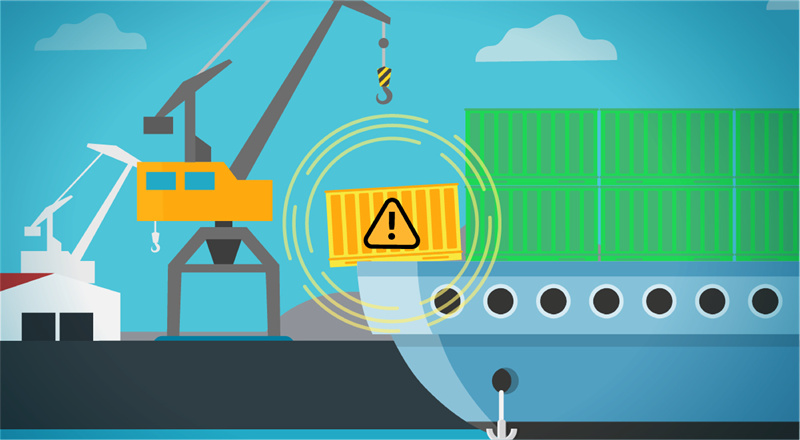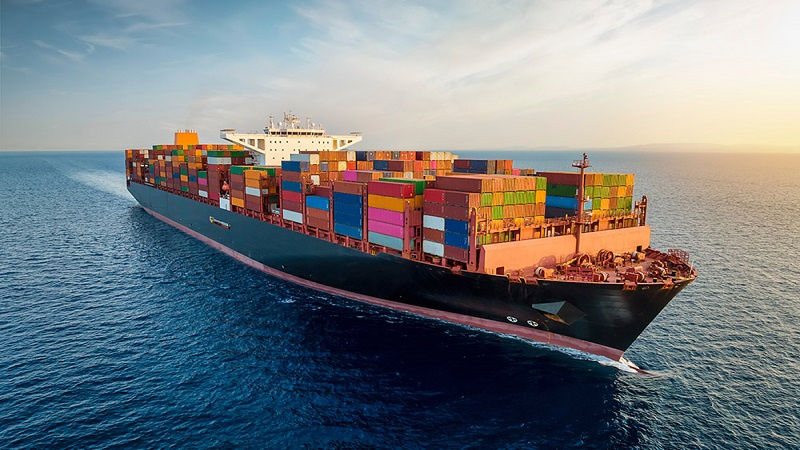As global trade continues to expand, ensuring the security of cargo containers becomes a paramount concern for businesses and governments alike. The movement of goods across borders involves numerous challenges, ranging from theft and tampering to potential terrorist activities.
In response to these threats, traditional container security measures have evolved, incorporating advanced technologies to enhance the safety and visibility of cargo throughout its journey. This article explores the historical approaches to container security, the limitations of traditional methods, and how advanced supply chain visibility software play pivotal roles in securing the global supply chain.
I. Traditional Container Security Measures:

Historical approaches to securing cargo containers
Historically, securing cargo containers involved basic physical measures such as locks, seals, and periodic inspections. The emphasis was primarily on preventing theft during transit and ensuring containers reached their intended destinations intact. While these methods were effective to a certain extent, they presented limitations as criminal tactics evolved.
Container seals, for instance, could be tampered with, leading to undetected theft or smuggling. Manual inspections were time-consuming and often needed more thoroughness to identify hidden threats. The reliance on historical methods was proving insufficient in addressing the complexities of modern supply chain logistics.
Limitations and challenges associated with traditional methods
Traditional container security measures faced various challenges. The manual nature of inspections made it difficult to achieve real-time monitoring and respond promptly to security breaches. Moreover, the sheer volume of global trade made it practically impossible to inspect every container thoroughly.
Additionally, criminal organizations became adept at exploiting weaknesses in these systems, using sophisticated techniques to tamper with containers without leaving visible signs. As a result, there was a pressing need for a paradigm shift in container security to meet the demands of an increasingly interconnected and complex global supply chain.
II. Advanced Technologies in Container Security:
Integration of GPS tracking systems
Integrating GPS tracking systems marked a significant leap forward in container security. These systems provided end to end supply chain visibility solutions by enabling real-time tracking of container movements. GPS technology allowed stakeholders to monitor the exact location of containers at any given moment, offering unprecedented control and oversight.
With GPS tracking, logistics managers gained insights into the end to end supply chain process, optimizing routes and mitigating potential risks. In the event of a deviation from the planned route or an unexpected delay, immediate alerts could be triggered, allowing for swift response and mitigation of potential security threats.
Innovative container solutions and IoT advancements
The advent of intelligent container solutions, leveraging the Internet of Things (IoT), further revolutionized container security. Intelligent containers are equipped with sensors and communication devices to relay vital information in real-time. These devices can monitor temperature, humidity, and other environmental factors, ensuring that sensitive cargo, such as pharmaceuticals or perishables, is automation transport under optimal conditions.
IoT advancements also introduced automated logistics and transport systems, contributing to the end-to-end supply chain visibility. Automation logistics streamlined processes, reducing the risk of human error and enhancing overall efficiency. Logistics automation companies played a crucial role in developing and implementing these technologies, offering innovative solutions to meet the evolving needs of the global supply chain.
III. Role of Technology in Enhancing Security:

Real-time monitoring for improved visibility
Real-time monitoring emerged as a critical component in enhancing container security. With advanced tracking technologies, stakeholders gained visibility into the entire supply chain, allowing them to promptly identify and address potential issues. This end-to-end supply chain visibility was critical in proactively preventing and responding to security threats.
Automation in logistics processes, driven by real-time monitoring, enabled swift decision-making and response actions. This level of visibility secured cargo in transit and allowed for better planning and optimization of the entire supply chain, reducing operational costs and increasing overall efficiency.
Sensor technologies became instrumental in detecting tampering or unauthorized access to containers. These sensors could see changes in temperature, vibrations, or any attempts to breach the container’s integrity. In case of suspicious activities, alerts were triggered, prompting immediate intervention.
The integration of these sensor technologies addressed the limitations of traditional methods, providing a layer of security that was not solely reliant on visual inspections. By leveraging these supply chain visibility tools, stakeholders could identify and neutralize potential threats before they escalate, ensuring the safety and integrity of the cargo.
IV. Collaboration and Industry Standards:
Importance of collaboration among stakeholders
Adequate container security goes beyond individual efforts; it requires collaboration among stakeholders throughout the supply chain. Governments, shipping companies, logistics providers, and technology developers must work together to establish a comprehensive and cohesive security framework.
Collaboration fosters sharing information and best practices, creating a network of support against common threats. This collaborative approach enhances the effectiveness of container security measures, ensuring a more robust defense against evolving risks and challenges.
Adherence to global security standards and regulations
Adherence to global security standards and regulations is imperative to achieve uniform and effective container security logistics automation systems. International organizations, such as the International Maritime Organization (IMO) and World Customs Organization (WCO), play a crucial role in establishing and promoting these standards.
By adhering to globally recognized security protocols, the industry ensures consistent and high security across borders. Compliance with regulations also facilitates the smooth movement of goods, reducing delays and enhancing the overall efficiency of the global supply chain.
Conclusion
In conclusion, container security has evolved significantly from traditional methods to embrace advanced technologies and collaborative approaches. Integrating GPS tracking systems, intelligent container solutions, and IoT advancements has provided end-to-end supply chain visibility solutions, enabling real-time monitoring and proactive response to potential security threats.
Automation in logistics processes has streamlined operations, reducing the risk of human error and enhancing overall efficiency. Moreover, collaboration among stakeholders and adherence to global security standards are critical elements in ensuring the safety and integrity of cargo across borders. As the global supply chain continues to evolve, container security will remain a dynamic field, requiring ongoing innovation and cooperation to effectively address emerging challenges and threats.
